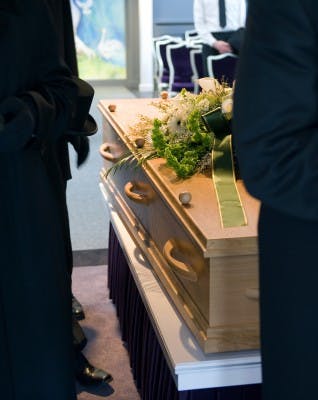The loss of an employee is one of those things that can blindside a supervisor or business owner.
Payroll, budgets, schedules – the day in and day out job responsibilities eventually become routine. However, when your company experiences a death, you will be faced with some uncharted territory and a new duty to fulfill.
As the leader of your team, it is your job to guide your business through the grieving process and eventually, back to work. It will never be an easy task; and patience, sensitivity and sympathy will all dub as necessary requirements. However with the right mindset and plans in place, your company can reflect, remember and carry on.
Soothe yourself
The recovery work starts with you. Before you can tackle this emotional time, you will have to check-in and soothe yourself.
Find an outlet outside of work whether it be a friend, family or mentor that you can call on. Keep your routine as normal as possible and turn to healthy releases like reading, exercising or meditating to battle this new source of stress.
Also, do not discount the guidance of a professional counselor. The death of one of your employees can bring on a surge of surprising emotions. Providing yourself with the best self-care possible is an important first step for you, as it will prepare you to carry out the sensitive tasks ahead.
Help your staff
With some self-care in place, it is time to address this significant happening to the rest of your staff. Like any good manager, your job here is to continue guiding and supporting the team. The same will take place when you gather everyone to let them know of the passing of their co-worker.
Be prepared for an array of emotions (tears, anger, shock are all appropriate and expected). Afford your team time to sit and talk. Sharing and reflecting is perhaps the most necessary element to recovery and your co-workers can use each other as bonded, community support.
It is important to communicate to your staff that you are there to help them any way you can, and you should encourage everyone to share their feelings. Providing people with additional, private outlets (phone numbers to counselors, grief meetings) is another good practice.
Understand that everyone will grieve in a different way, and at a different pace. After your initial meeting give people some time to absorb things and be prepared to check back in with each individual team member as the days progress.
Pay your respects
The best goodbyes are those that can provide some therapeutic relief. Once your staff has processed the passing, you can work on ways to provide an opportunity for closure.
Consider holding a candlelight ceremony or planting a remembrance tree as a group. You could provide your team with a book to write stories and share fond memories. You could even do something as simple as having a few moments of silence.
Finding what works best for you and your group is completely up to you, your only requirement is that you make the effort to provide your team with some peace. You should also decide as a group the best way to show your sympathy to the departed’s family and loved ones. Also, strive to work out a flexible plan so that every employee is afforded the opportunity to attend the funeral and/or pay their formal respects.
Business as usual
Carrying on with business is a tricky task, but it is your job to forge ahead. In the most delicate of ways, delegate the work of your past employee to those that can handle it and start looking for a permanent replacement. Motivation and productivity is likely to be low during the next few weeks, your patience and understanding will serve your team well.
Deal with technological open-wounds by changing voice mail recordings and forwarding all emails correctly. Also, cover security issues by removing all of the departed employee’s log-in and security privileges, just as you would do for a terminated employee.
The office space of your former employee is probably the most sensitive, symbolic part of your team’s environment. If you can afford it, brainstorm as a group comfortable ways to change the space. Your collective goal is to establish a comforting but appropriate change.
For example, you could turn their old office into a new break room where people can reflect and relax. Or consider using their desk as a place to put fresh flowers and display industry-related books and magazines.
Getting back to “normal”
In whatever you do, keep your staff in mind. Do not leave your employee’s things untouched, and on the flip side, do not plop a replacement employee in the same exact place. Be as sensitive and sympathetic as you can reasonably be.
Eventually your company will adopt a new “normal.” The speed and efficiently with which that is carried out will be greatly served by your prepared and proper leadership.
What other factors must you consider with the passing of an employee?
